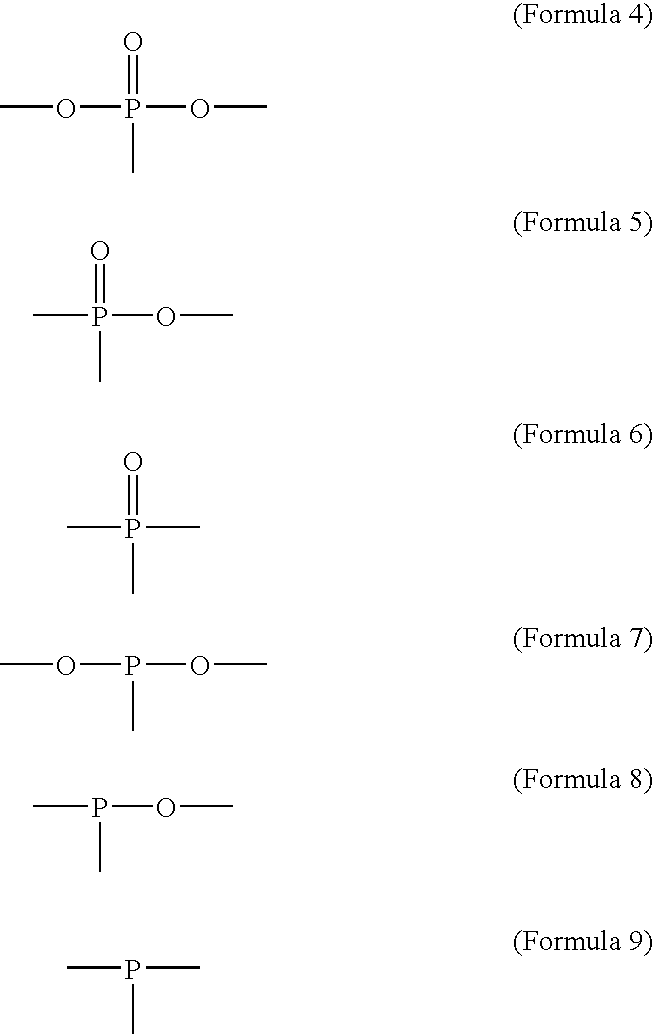Polymerization catalyst for polyesters, polyester produced with the same, and process for production of polyester
a polymerization catalyst and polyester technology, applied in the field of polyester polymerization catalysts, can solve the problems of inability to achieve antimony safety, and inability to achieve polycondensation catalysts, etc., to achieve superior quality, reduce the effect of catalyst activity and sufficient activity
- Summary
- Abstract
- Description
- Claims
- Application Information
AI Technical Summary
Benefits of technology
Problems solved by technology
Method used
Image
Examples
example 1
[0058]As the catalyst, 3 g / l aluminum chloride in ethylene glycol was added, in an amount of 0.015 mole % in terms of aluminum relative to the acid component in polyester, to bis(2-hydroxyethyl) terephthalate, and then dimethyl phenylphosphonate was added in an amount of 0.02 mole % relative to the acid component in polyester, and the mixture was stirred at 245° C. for 10 minutes at atmospheric pressure. Then, the mixture was heated over 50 minutes to 275° C., during which the pressure in the reaction system was gradually reduced to 0.1 mmHg, and further polycondensation reaction was conducted for 3 hours at the same temperature and at the same pressure. The intrinsic viscosity of the resulting polymer is shown in Table 1.
PUM
| Property | Measurement | Unit |
|---|---|---|
| temperature | aaaaa | aaaaa |
| pressure | aaaaa | aaaaa |
| temperature | aaaaa | aaaaa |
Abstract
Description
Claims
Application Information
 Login to View More
Login to View More - R&D
- Intellectual Property
- Life Sciences
- Materials
- Tech Scout
- Unparalleled Data Quality
- Higher Quality Content
- 60% Fewer Hallucinations
Browse by: Latest US Patents, China's latest patents, Technical Efficacy Thesaurus, Application Domain, Technology Topic, Popular Technical Reports.
© 2025 PatSnap. All rights reserved.Legal|Privacy policy|Modern Slavery Act Transparency Statement|Sitemap|About US| Contact US: help@patsnap.com

